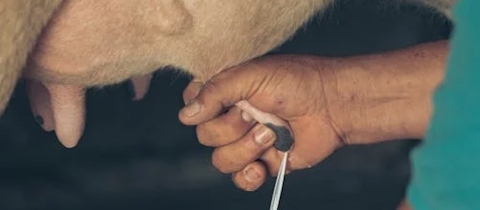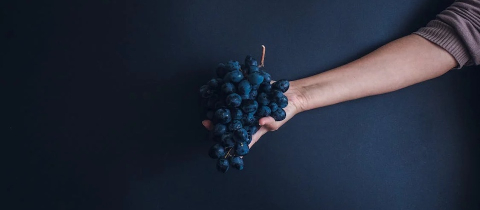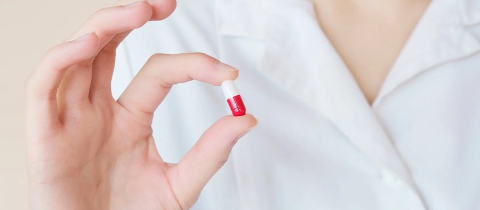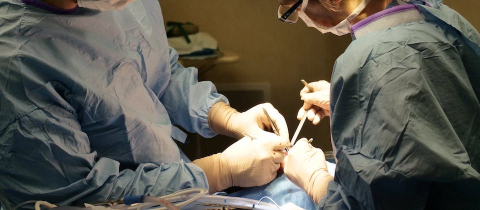Can we find 15,000 taxonomists willing to work around the clock? I write this because there are a lot of species out there that need to be properly identified, but apparently a taxonomist (a person who names and identifies living things) can only critically identify about 0.01% of all species on this planet. So we would need tens of thousands of them to know exactly what’s what when it comes to living things.
It may sound like a silly thought experiment, but the next time you open a jar of herbal medicine and stare at the processed powder, you may wish you had a taxonomist next to you to confirm that what’s on the label is indeed the thing you are staring at.
Unfortunately, heavily processed plant products can hardly be identified with the naked eye. Recognizing a leaf is one thing, but when all you have is a pound of dust, better tools are required.
The scientific literature on the adulteration and contamination of herbal medicines is replete with alarming reports. There’s the time scientists found out some St. John’s wort was actually an herbal laxative called senna, which can cause chronic diarrhea and even liver damage with prolonged use. That same team also revealed that some gingko they had tested was contaminated with walnut, to which some people are allergic. I read about a mother and newborn growing hair in weird places because their Siberian ginseng was actually silk vine; about an herbal product meant to tackle hay fever which was revealed to contain a powerful cocktail of pharmaceuticals, including a blood thinner and an illegal stimulant; and about an investigation by the New York State Attorney General that claimed that many commercial herbal products were not what they said they were.
But one of the techniques used to gather this data—a DNA-based assay meant to take over from taxonomists when herbs have become unrecognizable—is itself not as reliable as some headlines have led us to believe.
Barcode readers for plants
The technique is called DNA barcoding. It was first coined by a team at the University of Guelph who used it to identify animals. The principle is elegant: there are bits of DNA that mutate so quickly on the evolutionary scale that each species has a different version of that bit. It’s like a barcode. On either side of this barcode is a sequence of DNA that is identical across species. So what’s a molecular taxonomist to do with this information? They zoom in on these identical sequences and they read the barcode. And they can theoretically tell, “This is a fox. This is a Canada goose. This is a thorny devil.”
The technique was adapted to the identification of plants, but it turns out that finding the barcode of a plant is a bit more challenging. The types of barcodes used for animals don’t mutate fast enough in plants, which means that too many plant species share the same one, so scientists had to look at the DNA contained in plastids. Plastids are small compartments in plant cells that house important chemicals, such as the pigments giving plants their colours. But isolating this DNA can be quite arduous because of additional plant chemicals, like complex sugars and tannins, that complicate the extraction process. When you do manage to extract DNA from a processed herbal product, the DNA may be too damaged to be useful. Heat, UV exposure, filtration steps, and the entire processing of the plant into a commercial product can act like scissors that chop the DNA up into useless fragments. And then there’s the pernicious problem of affinity. In order to read the barcode, it has to be amplified. This amplification requires short bits of DNA to bind on either side of the barcode. But this binding doesn’t always occur. In fact, it has been reported that these short bits of DNA can preferentially bind to something other than the herb you are trying to identify, like an excipient or a fungus that grows with the plant. In all of these cases, DNA barcoding can lead to false negatives: the machine will tell you the herb on the label is not present, but it may very well be. And mixtures of multiple herbs present an additional obstacle, though a new method called DNA metabarcoding has been shown to be able to resolve these concoctions.
Who knows what’s inside if it’s “natural”?
Herbal products can be contaminated rather easily. Heavy metals can come from the soil; same for microbes, which can also be introduced because of poor hygiene in the factory; weeds, dirt, pesticides, moulds, and mycotoxins have all been reported in these types of products. And then there’s adulteration, the purposeful replacement of one herb with another, which can be done because of increased demands and limited availability. Sometimes, it’s because two plants share a name in Chinese, such as Stephania tetranda and Aristolochia fangchi, both known as fang ji. When the one was replaced by the other in weight loss products in 1990s Belgium, it led to many cases of kidney damage because of A. fangchi’s toxic aristolochic acid.
A recent meta-analysis on the topic of adulteration and contamination of herbal medicines came up with this number: 27% of herbal products worldwide were shown to be adulterated (the number is 33% for North America and a whopping 79% for Australia). But there’s a caveat. Some of the detection tools used are based on chemistry (e.g. is there Viagra in this herbal potency remedy?), which others rely on detecting DNA. And while scientists can detect when a contaminating herb is present, they may not always be able to tell that the actual herb is there if its DNA is too degraded. Newer techniques are being explored to enhance these detection tools, but the most consistent recommendation I found in the literature is that a single technique will not be sufficient. Improved DNA analysis, microscopic methods, and chemical analyses will all have a role to play, and standardized protocols are desperately needed.
Plants are amazing. It’s been estimated they produce a total of 200,000 chemicals. Some of these can be used to treat conditions in humans. But they need to be isolated, standardized, and often modified to ensure safety. The amounts of chemicals made by plants fluctuate depending on the age of the plant, the season, the latitude, the altitude, the type of soil, and other variables. Ingesting highly variable mixtures that have been shown to frequently be contaminated or adulterated is a little bit like playing Russian roulette. When we browse the shelves for commercial herbal remedies, this is the question that should haunt us: who knows what’s inside if it’s “natural”?
Take-home message:
-A recent look at the worldwide literature shows that, of all the commercial herbal medicine products scientists have tried to identify, over a quarter were shown to contain ingredients that were not listed on the label.
-Many products apparently do not even contain the herb listed on the label, although a common technique used to figure this out (called DNA barcoding) can sometimes fail to detect DNA when the herbs have been ground up
Have a comment? Leave it on the FB post!







